At a glance
This toolkit includes resources and graphics to learn more about heart valve disease prevention, risk, and management. Explore stories from patients living with heart valve disease and hear more about their treatment journeys.
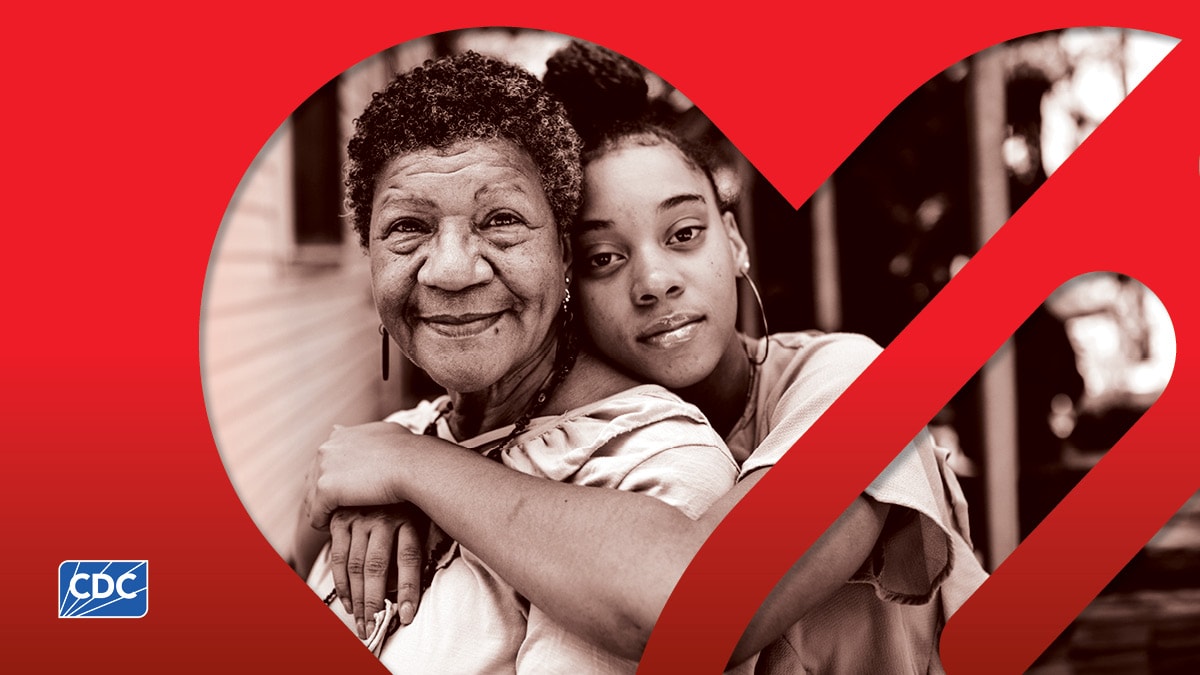
Who should use this toolkit
Patients and the public may find the information and resources in this toolkit helpful for learning about heart valve disease. Health care teams can use these resources for patient education.
Shareable resources for patients
The following materials are available to help educate patients and the public who may be at risk for or diagnosed with heart valve disease.
Know Your Risk and Symptoms for Heart Valve Disease (en español)
This infographic can help explain heart valve disease and its effects on the heart. It can be used by health care teams in need of a visual aid for discussing the condition with patients.
Heart Valve Disease Prevention
This handout includes steps people can take to help prevent heart valve disease.
Discussing Heart Valve Disease With Your Health Care Team (en español)
This handout is designed to guide patients in starting the conversation with their health care team about heart valve disease, including questions to ask and information about risk, signs, and symptoms.
After a Heart Valve Disease Diagnosis (en español)
This handout is designed for patients who have been newly diagnosed with heart valve disease to learn about treatment, lifestyle changes, and management of the condition.
Patient success stories
Learn more from people living with heart valve disease about their journey from diagnosis to treatment. Five individuals share their accounts of self-advocacy and offer advice to people who may be newly diagnosed.
Jim has always been active. At different times in his life, he's been a long-distance runner, an avid tennis player, and a regular golfer. With all that exercise, he expected his heart to keep pumping for a very long time. But when he was 63, during a routine physical, his doctor heard a heart murmur through the stethoscope and referred Jim to a cardiologist. "I was totally shocked," Jim said. He had no symptoms.
It turned out that Jim's mitral and aortic valves were leaky. He also had a balloon-like bulge, known as an aneurysm, in the first section of his aorta, the main blood vessel that carries blood from the heart to the rest of the body. At that time, Jim didn't have any symptoms and his doctor recommended regular monitoring. Over the next year, he started having symptoms including fatigue, shortness of breath, dizziness, and loss of balance.
Jim's mother had died of heart disease in her 60s. Determined not to suffer the same outcome, Jim had open-heart surgery to fix the aneurysm and repair his valves. Not long after, he had a second open-heart surgery to replace his aortic valve.
A few years later, yet another valve was leaking: his pulmonic valve. Recovery from open-heart surgery had been slow and painful, and Jim was adamant: "I'd just rather live my life out the way I was feeling rather than go through another open-heart procedure," he said. Fortunately, Jim was able to have the valve replaced via transcatheter aortic valve replacement (TAVR), as part of a clinical trial. He went home the day after the procedure, "and I was back on the golf course in 2 weeks."
Jim knows he'll need his aortic valve replaced again soon, but with less invasive treatment options continuing to expand, he is confident there will be plenty more rounds of golf ahead.
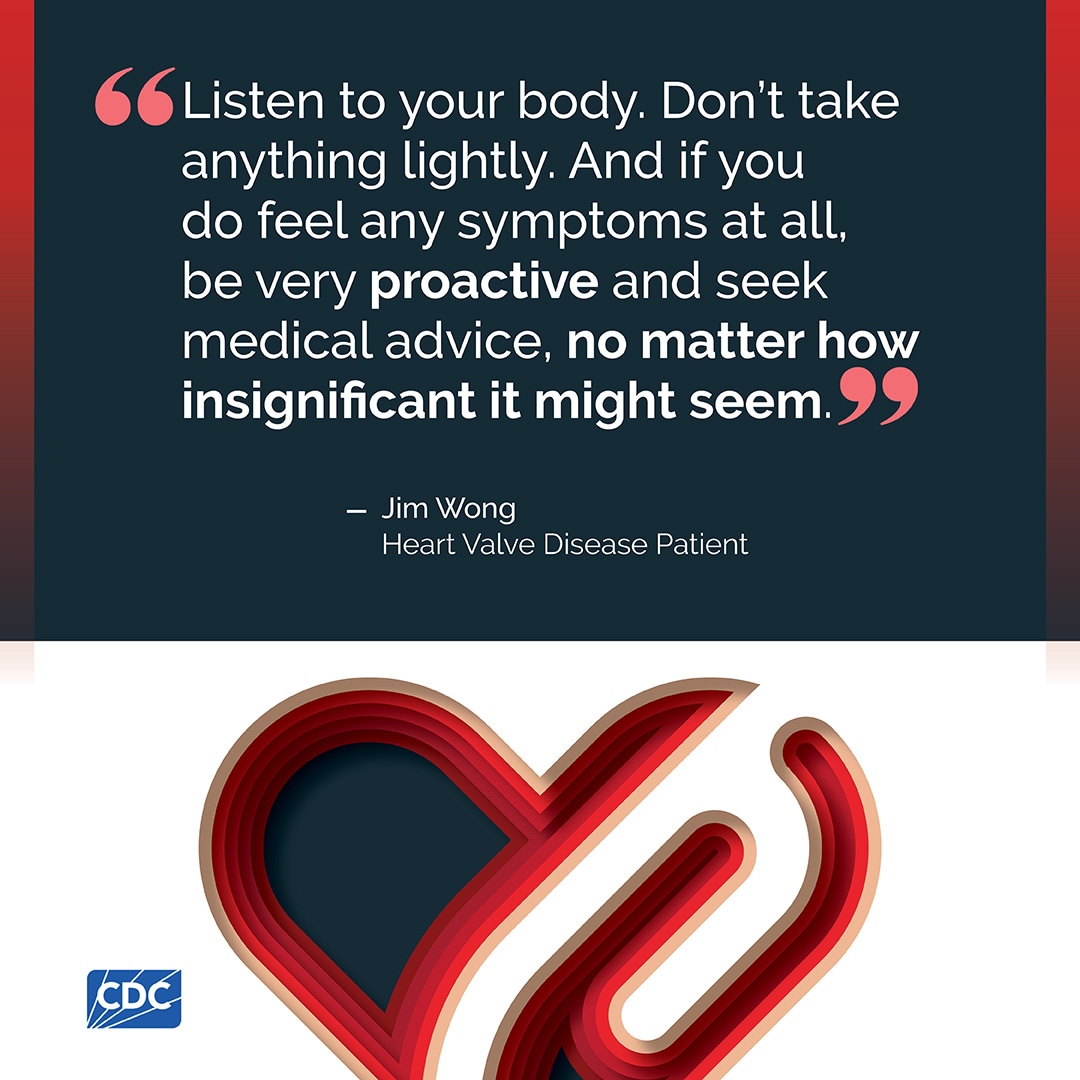

Like many people who were isolating at home during the COVID-19 pandemic, John and his wife Kathi made a resolution to use the time to improve their health—with long walks, strength exercises, and healthy eating. But John's heart had other plans.
More than a decade before, John's doctor noticed a slight heart murmur when listening with a stethoscope. An echocardiogram revealed moderate aortic stenosis, which means that the valve between his heart's main pumping chamber and his body's main artery had narrowed, reducing blood flow to the rest of his body. After that discovery, John had an echocardiogram every 2 years to check on it.
John's 2021 echocardiogram revealed that the stenosis had advanced and was now severe. He'd had only mild symptoms. He didn't know of any risk factors, and he was only 60. As a registered nurse, "I had some idea of what aortic stenosis was," he said. "But it's sort of a blow to the gut when it pertains to you."
"We knew we had some big mountains to climb," said Kathi.
There was no time to waste. John met with a cardiovascular surgeon, who began the tests and procedures John needed before valve replacement surgery. Meanwhile, as her husband's "care partner," Kathi realized that the best way to help was to keep a timeline and organize the information they'd need throughout the process. "It can be extremely overwhelming," she said. For John, her help let him focus on "being the patient" rather than on schedules and logistics.
The surgeon talked with John and Kathi about open-heart surgery, but "I wasn't at peace with it," John said. The couple asked the surgeon whether John would be a candidate for a less invasive alternative they'd read about, transcatheter aortic valve replacement (TAVR), typically used for much older patients but becoming more common in patients of all ages. Eventually, John would need another replacement, but John was sure TAVR was the better choice.
Thankfully, John's team agreed. Almost 4 months after the diagnosis of severe aortic stenosis, John underwent TAVR with no complications. He was sitting up in a chair within 8 hours and walking the hallway within 24 hours, and the next day, he was discharged. "Thirty-two hours door to door," Kathi said. "It was nothing short of a miracle." Cardiac rehabilitation helped him with a quick recovery, and John was soon traveling, camping, and hitting the hiking trails.
The couple has some words of wisdom for anyone facing John's situation. "Do not be afraid to ask questions, and don't leave until you have them answered in a fashion that you can understand," Kathi said.
"And never ignore symptoms, even if they seem insignificant," John added.
Finally, staying on top of your health can be a lifesaver: John's cardiologist told the couple later that their good health habits reduced John's risk for a heart attack as his stenosis was progressing. All that exercise and healthy eating truly paid off.
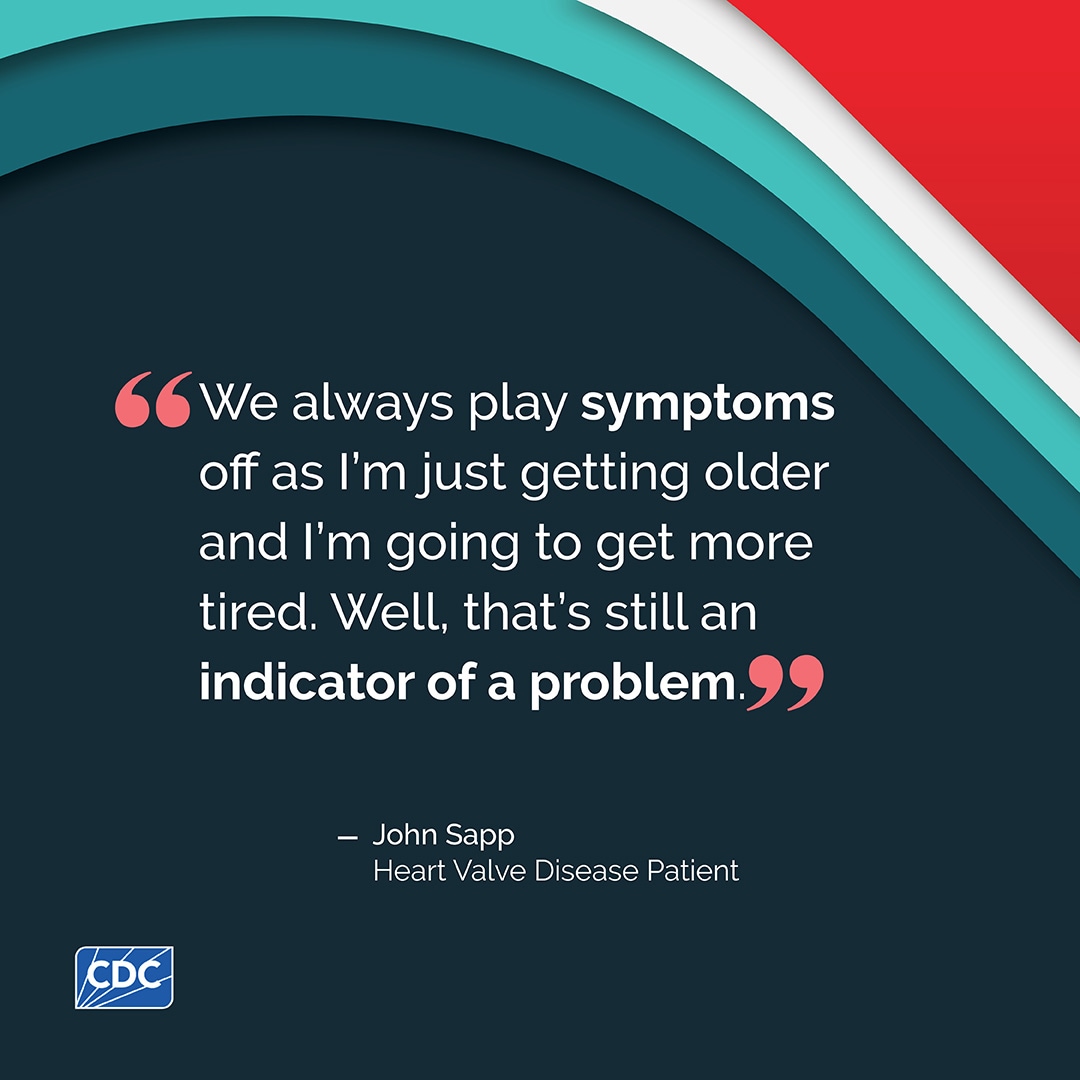
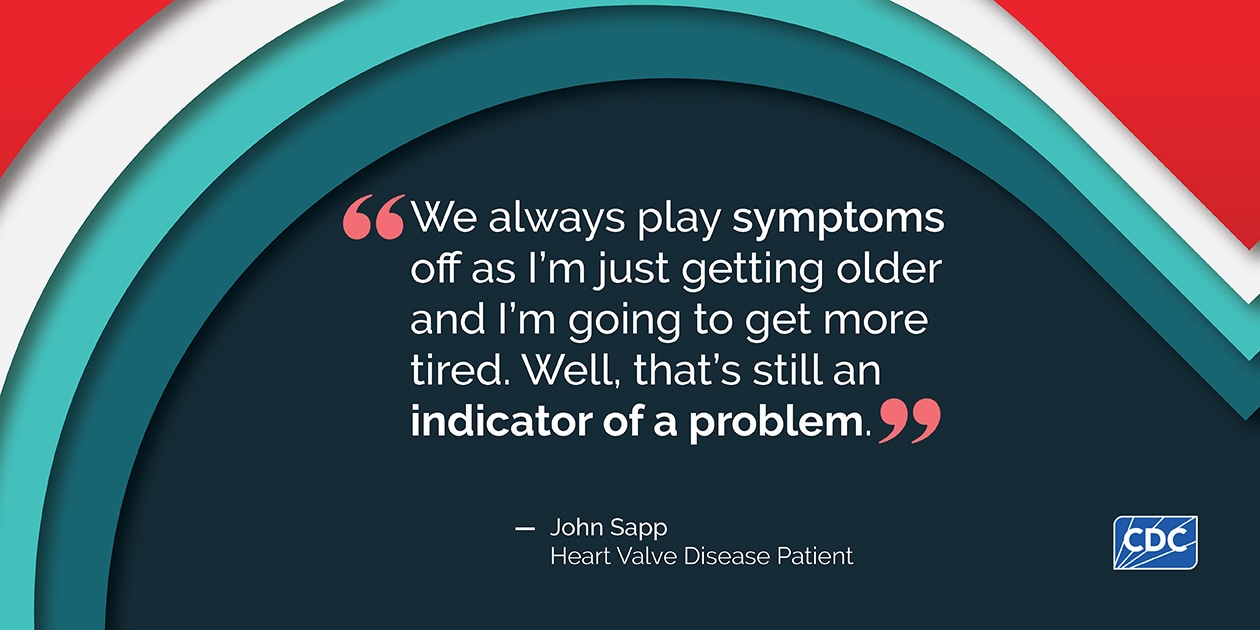
Having had annual checkups since she was 40, Joy already knew she had a heart murmur. When she hit her mid-70s, her cardiologist told her she also had aortic stenosis, meaning that the heart valve that lets blood out of her heart's main chamber had narrowed, reducing blood flow to the rest of her body. Joy also had a family history of heart valve issues; her mom, who had the same condition, passed away in 2011.
After her mom's death, Joy says, "I became more focused on taking care of myself." She hadn't noticed any symptoms like shortness of breath or fatigue, but every 6 months, Joy's doctor performed tests to monitor her heart.
Still, in 2018, when Joy had an episode of burning pain down the middle of her chest, "I paid no attention to it," she admits. She had recently had a heart checkup and felt fine, so she let the pain subside and moved on. But when it returned 2 weeks later, "I said, 'Okay, Joy, take your butt to the doctor!'" The stenosis had worsened, and it was time to treat it.
Open-heart surgery was still the standard care for aortic stenosis. But Joy's primary care doctor asked about her interest in participating in a study on transcatheter aortic valve replacement (TAVR), a minimally invasive procedure that was unavailable to most of the population at the time. In 2019, the Food and Drug Administration approved her participation, and because of the trial's results, TAVR became available to the general population soon after. She had TAVR on a Wednesday, was up walking without pain by Thursday, and went home Friday. "I've been running around ever since," she said. She adds, "You should listen to your body and listen to your doctor."
Joy has more words of wisdom for others who may have concerns about their heart health: "You're not fooling anybody but yourself when you ignore when your body is talking to you. You're not helping your children. You're not helping your husband or your wife. You're not helping your friends. You're not helping yourself on the job. You are harming yourself in the worst way."

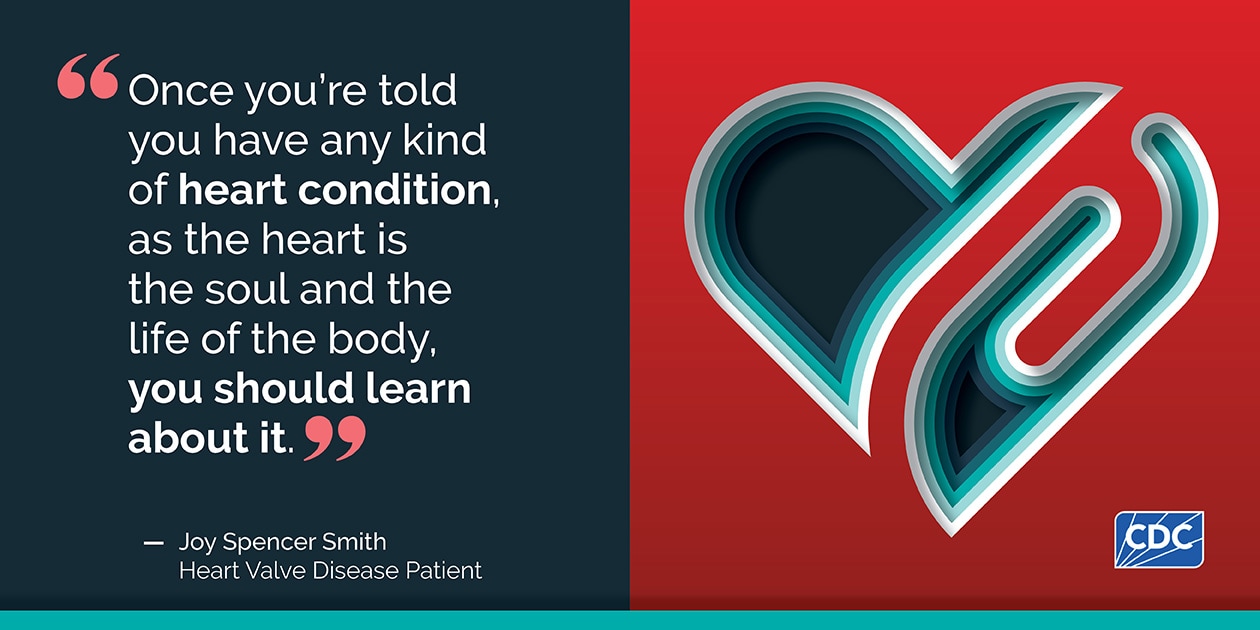
Juan is no stranger to illness. Since his teens, he's faced multiple serious diseases, including HIV and three kinds of cancer. Thus, in his early 50s, when he was out riding his bike and suddenly couldn't breathe, Juan thought his time had finally come. "I felt like I was having a heart attack," he recalled.
But he wasn't. After listening to his heart and running various tests, Juan's cardiologist told him he had aortic stenosis, a type of heart valve disease marked by narrowing of the aortic valve, which is the valve that blood flows through as it exits the heart. As aortic stenosis reduces blood flow, it causes the heart to work harder. In Juan's case, that day on the bike path, it had literally taken his breath away.
Although aortic stenosis most often results from calcium buildup in the valve over time, Juan's case was different. The chest radiation he'd received at age 18 to treat Hodgkin's lymphoma left his heart valve with scarring, a known risk. Now, decades later, the valve couldn't open properly.
At the time, open-heart surgery was the usual care for aortic stenosis. But Juan was fortunate: he qualified for a procedure called transcatheter aortic valve replacement (TAVR), a minimally invasive alternative. On the day of surgery, "everything went off without a hitch," he said. "The wellness feeling was immediate. The moment I woke up after surgery, I was like, 'Well, this is different!'" And he was "blown away" that he got to go home the very next day.
Today, TAVR is used in more than 12% of aortic valve procedures, and it is becoming more common. Juan says that for someone facing this or any other heart problem, it's essential not only to find a medical team you trust but also to understand your condition so you can be your own advocate. "Knowledge is power, and then you won't be afraid," he said. Since his biking episode, in fact, Juan's own better understanding of his heart has let him get on with his life: "I continue to make my dreams come true," he said.


Robyn is a fierce advocate for women's heart health. Her passion stems in part from losing a 42-year-old friend and tennis partner to a massive heart attack. "It was shocking," she said of her friend's passing. "I wasn't really aware of women having heart disease."
A few years after the loss of her friend, Robyn wanted to check in on her own heart health. She sought testing, which revealed she had an aortic aneurysm, a bulge in the aorta that would need to be monitored and potentially surgically repaired.
After being referred to a specialist, she learned that her aortic valve, through which blood exits the heart into the rest of the body, had only two leaflets (which are like doors) instead of three. This is called a bicuspid aortic valve, which is congenital, meaning that Robyn had developed it before birth. This type of valve also needs to be closely monitored because it can lead to problems with the heart's function.
Robyn still felt well, so she had regular checkups and continued to be active, including playing tennis several days a week. Eventually, though, she started feeling fatigued. She had developed aortic stenosis, a stiffening of the aortic valve, and it was becoming severe. "I was sleeping 3 to 4 hours every afternoon," she said.
Aware that heart disease is the leading killer of women and men, Robyn began asking a lot of questions, getting to know her condition, her treatment options, and her care team. At age 58, Robyn had open-heart surgery to remove the aortic aneurysm and replace her aortic valve. The improvement was immediate: "All of a sudden, you wake up, and you feel like you can breathe again," she said. "Having oxygen in my body again was just an amazing experience." She calls the whole surgical experience her "second heart start."
Why was Robyn at risk for these problems? Having been adopted, she had no knowledge of her medical history that might reveal a risk for heart disease. In her 50s, Robyn discovered her birth father's family and learned she has a half-brother with a bicuspid aortic valve. In addition, in her mid-50s, Robyn had endocarditis, a type of infection that can damage the valve. She was fortunate to have received a timely diagnosis and treatment.
Looking back on her experience, Robyn's best advice for people preparing for open-heart surgery? "Research your options," she said. "Get to know your care team. Ask more questions."
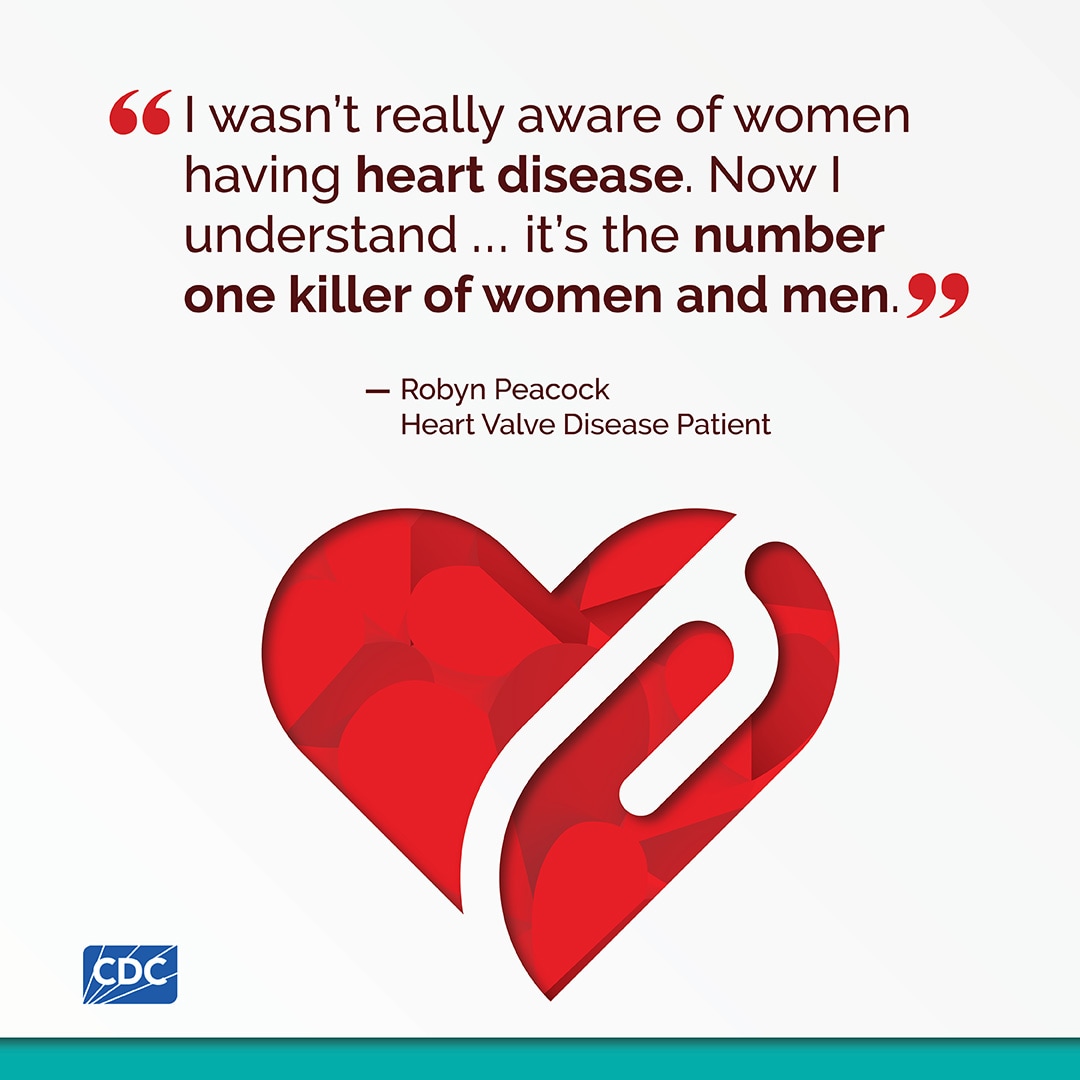
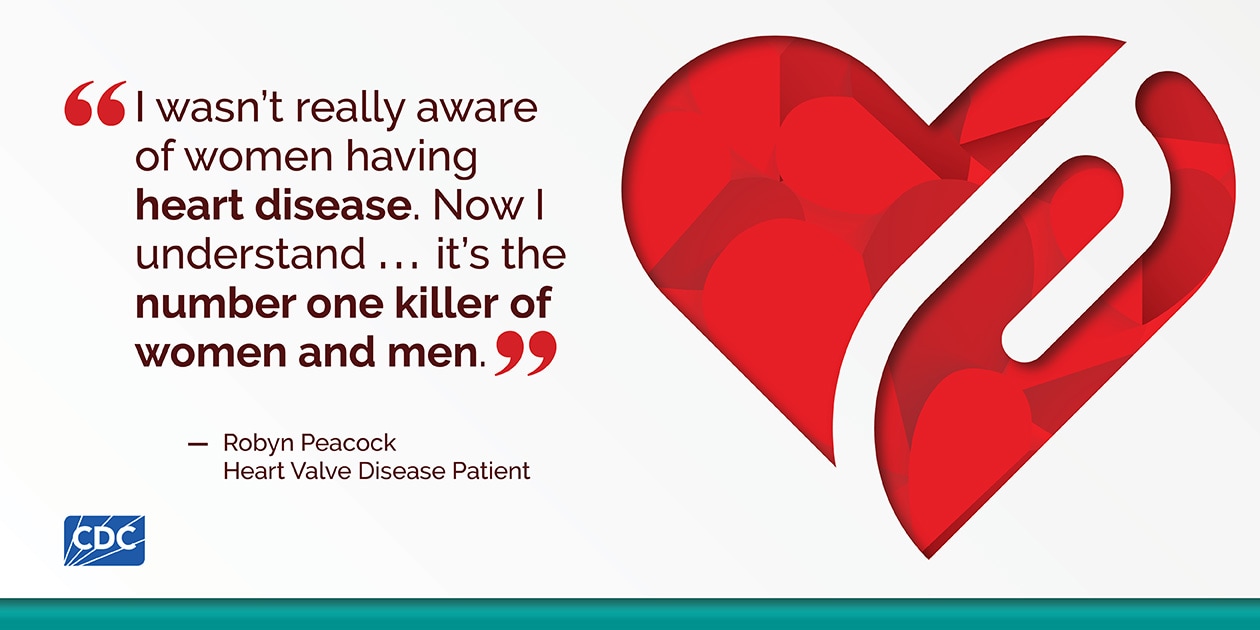
Patient videos
Navigating Heart Valve Disease
Learning I Had Heart Valve Disease
Listen to Your Body: Heart Valve Disease Symptoms
Heart Valve Disease: After Surgery
Social media posts
Help to spread the word using social media messages to communicate important information about heart valve disease with your networks.
Facebook/Instagram/LinkedIn
- How well do you know your heart? As we age, the risk for developing heart valve disease increases. Talk to your health care professional about the signs of heart valve disease. Learn more at cdc.gov/KnowYourHeart. #KnowYourHeart
- Heart valve disease often goes undiagnosed. Take control of your heart health by learning the signs and symptoms, and talk to your health care professional if you have questions or concerns. Learn more at cdc.gov/KnowYourHeart. #KnowYourHeart
- There are steps you can take to keep your heart healthy and prevent heart valve disease. For example, make sure that you:
- Eat heart-healthy foods, such as fresh fruits and vegetables.
- Get at least 2.5 hours of physical activity each week.
- Reduce stress by taking breaks from work or the news.
- Learn more at cdc.gov/KnowYourHeart. #KnowYourHeart
- Eat heart-healthy foods, such as fresh fruits and vegetables.
- Did you know that more than 11 million U.S. adults live with heart valve disease? Early diagnosis and treatment are key to managing this condition. Talk about your heart health and the following risk factors at your next health care visit:
- Hypertension or high cholesterol.
- Diabetes or obesity.
- A history of rheumatic fever or blood infections.
- Congenital malformations of the heart.
- A family history of heart valve disease.
- Learn more at cdc.gov/KnowYourHeart. #KnowYourHeart
- Hypertension or high cholesterol.
- Did you know? Not all heart murmurs are cause for alarm. If your child's pediatrician has detected a murmur, discuss next steps for ruling out concerns. Keep your child's heart health part of the conversation at regular checkups. Learn more at cdc.gov/KnowYourHeart. #KnowYourHeart
- Congenital heart valve disease isn't always properly diagnosed at birth. If you have concerns about your child's heart health, talk to their pediatrician about your family history of heart conditions. Get the facts here: cdc.gov/KnowYourHeart
- Studies show that heart valve disease is under diagnosed and under treated among Black, Hispanic/Latino, and Asian populations. If something feels off about your health, speak up during visits with your health care professional. Learn more about heart valve disease and access CDC tools that can help you discuss your concerns here: cdc.gov/KnowYourHeart
- Aging well means taking care of your heart. Learn about the signs of heart valve disease and make sure to talk to your health care professional about any concerns you have. Learn more at cdc.gov/KnowYourHeart
Twitter/X
- Don't dismiss signs of #HeartValveDisease as part of aging. Talk to your health care professional if you have concerns or experience symptoms. Learn more at cdc.gov/KnowYourHeart. #KnowYourHeart
- Early detection and treatment are key to managing your heart health. Take control of your heart by talking to your health care professional about #HeartValveDisease. Learn more at cdc.gov/KnowYourHeart. #KnowYourHeart
- DYK 11 million U.S. adults live with some form of heart valve disease? #KnowYourHeart by talking to your health care professional about the signs and symptoms of #HeartValveDisease. Learn more at cdc.gov/KnowYourHeart
